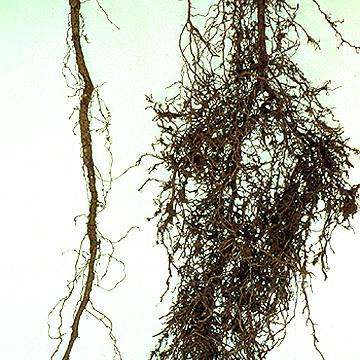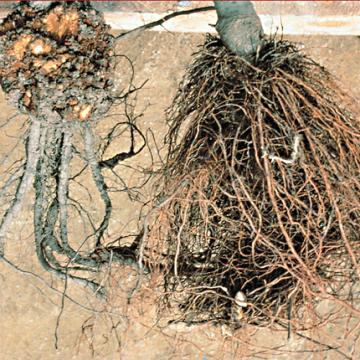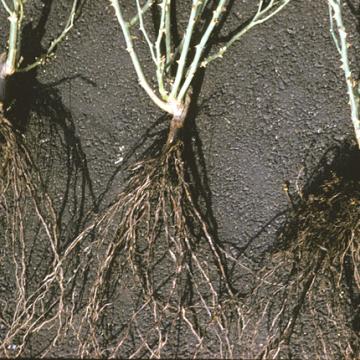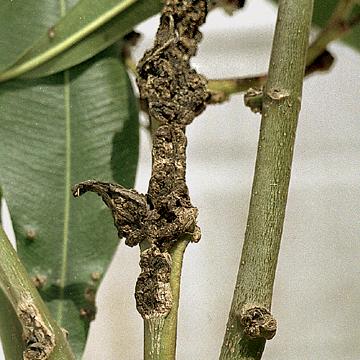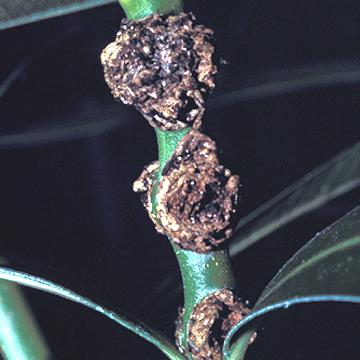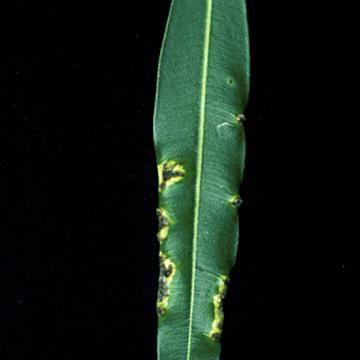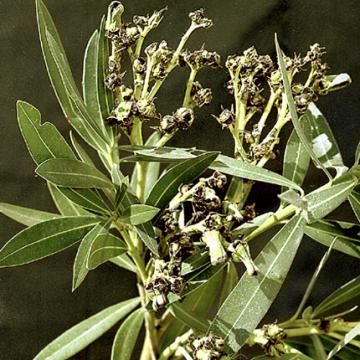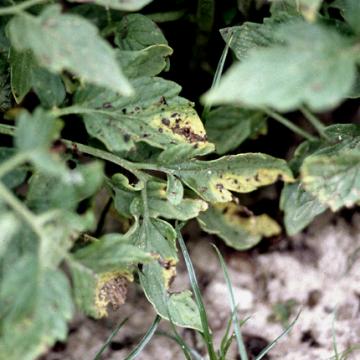DISEASE: Hairy root
HOST: Rose
Hairy root symptoms of many fibrous roots (right). Noninfected root (left).
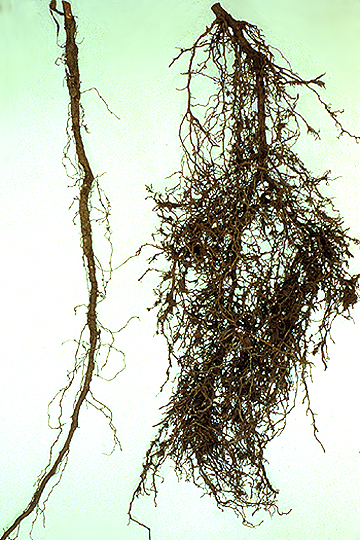
Hairy root | Rose
DISEASE: Hairy root
HOST: Rose (Rosa sp.)
PATHOGEN: Agrobacterium rhizogenes
SOURCE: R. Raabe
DISEASE: Hairy root
HOST: Apple
Crown gall (left) and hairy root (right) caused by Agrobacterium tumefaciens and A. rhizogenes, respectively.
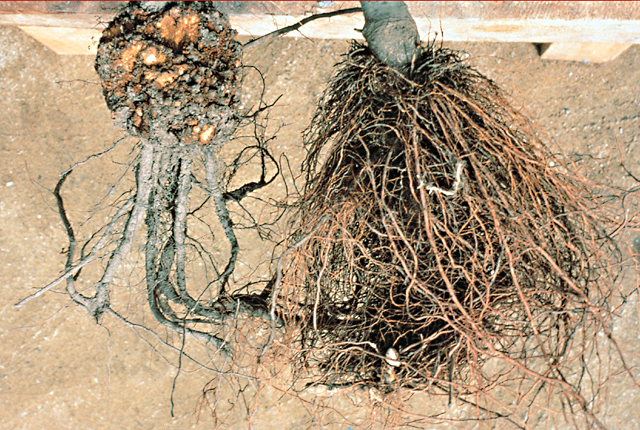
Hairy root | Apple
DISEASE: Hairy root
HOST: Apple (Malus domestica)
PATHOGEN: Agrobacterium rhizogenes
PATHOGEN SYNONYM: Rhizobium sp.
SOURCE: APS
DISEASE: Hairy root
HOST: Rose
Crown gall (left) and hairy root (right) caused by Agrobacterium tumefaciens and A. rhizogenes, respectively. Healthy root (center).
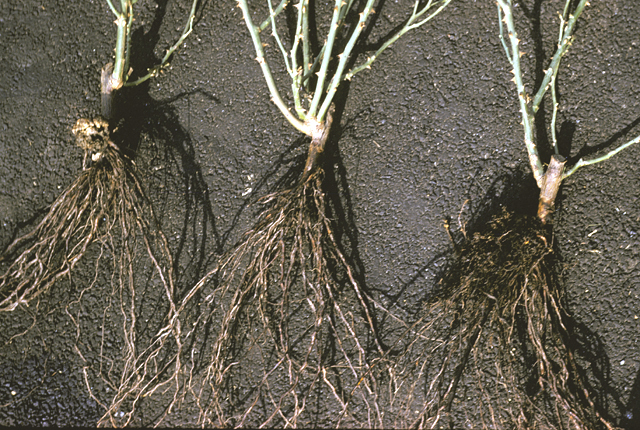
Hairy root | Rose
DISEASE: Hairy root
HOST: Rose (Rosa sp.)
PATHOGEN: Agrobacterium rhizogenes
PATHOGEN SYNONYM: Rhizobium sp.
SOURCE: M. Schroth
DISEASE: Oleander knot
HOST: Oleander
Oleander with small knots/galls on leaf and stems.
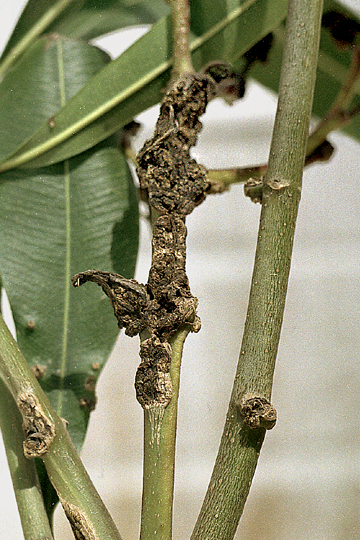
Oleander knot | Oleander
DISEASE: Oleander knot
HOST: Oleander (Nerium oleander)
PATHOGEN: Pseudomonas savastanoi pv. nerii
SOURCE: W. Sinclair
DISEASE: Oleander knot
HOST: Oleander
Young stem with knots/galls.
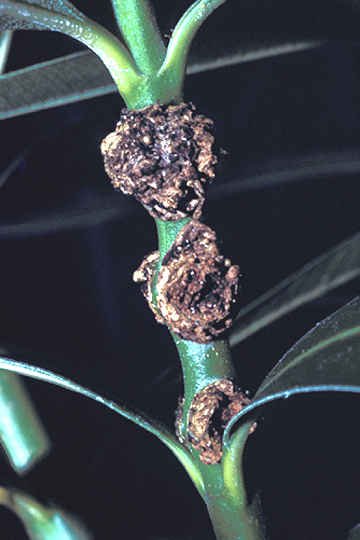
Oleander knot | Oleander
DISEASE: Oleander knot
HOST: Oleander (Nerium oleander)
PATHOGEN: Pseudomonas savastanoi pv. nerii
SOURCE: R. Raabe
DISEASE: Oleander knot
HOST: Oleander
Leaf with early stage of knot/gall formation.
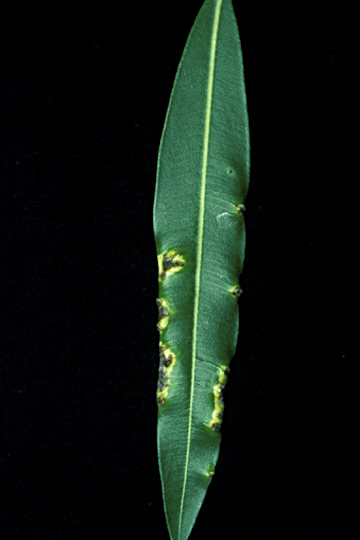
Oleander knot | Oleander
DISEASE: Oleander knot
HOST: Oleander (Nerium oleander)
PATHOGEN: Pseudomonas savastanoi pv. nerii
SOURCE: R. Raabe
DISEASE: Oleander knot
HOST: Oleander
Infected flowers with small knots/galls and necroses.
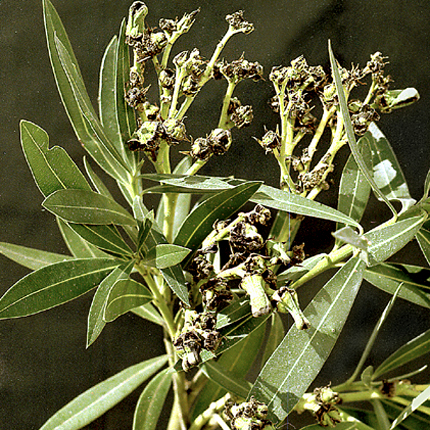
Oleander knot | Oleander
DISEASE: Oleander knot
HOST: Oleander (Nerium oleander)
PATHOGEN: Pseudomonas savastanoi pv. nerii
SOURCE: W. Sinclair
DISEASE: Syringae leaf spot
HOST: Tomato
Leaves with brown necrotic lesions and chlorotic margins. Symptoms vary greatly among cultivars. Some have black or brown lesions with bright yellow, chlorotic areas and others do not have yellowing.
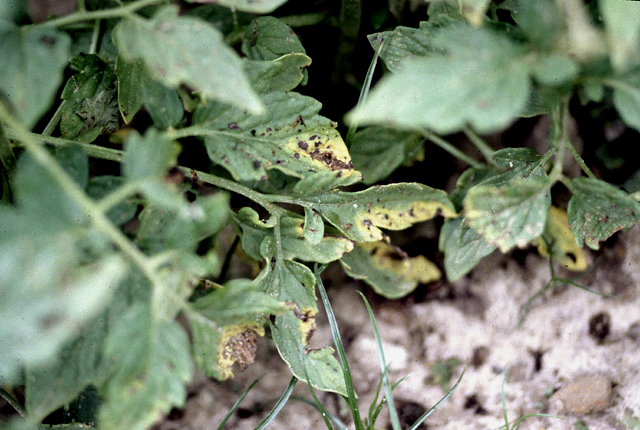
Syringae leaf spot | Tomato
DISEASE: Syringae leaf spot
HOST: Tomato (Lycopersicon esculentum)
PATHOGEN: Pseudomonas syringae pv. syringae
SOURCE: R. Gitaitis


